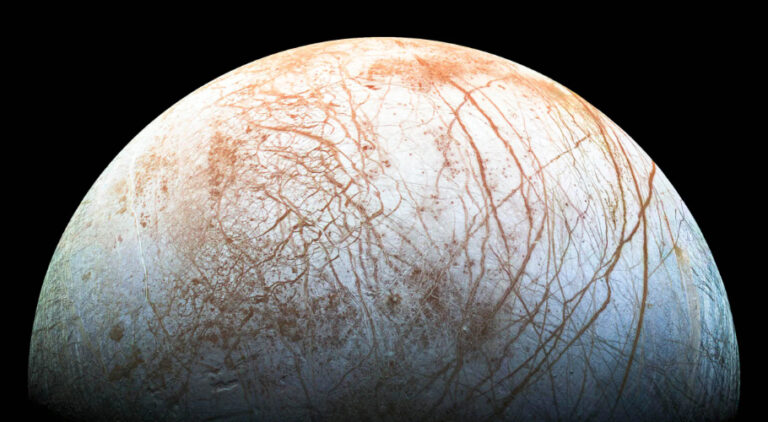In an exciting scientific breakthrough, NASA’s James Webb Space Telescope has confirmed the presence of carbon dioxide on Jupiter’s moon Europa. This remarkable discovery is of great significance in our ongoing exploration of our solar system and the quest for potential signs of life beyond Earth.
The carbon dioxide was detected in a specific region on Europa’s icy surface and is believed to have originated from within the moon’s subsurface ocean. Europa has long been a subject of intense interest for scientists due to the possibility of a subsurface ocean that could potentially harbor the conditions necessary for life.
The James Webb Space Telescope, renowned for its cutting-edge capabilities and precision, played a pivotal role in this discovery. Its advanced instruments allowed scientists to analyze the composition of Europa’s surface with unprecedented detail and accuracy.
The presence of carbon dioxide on Europa is a significant finding because it provides further evidence of the complex chemistry occurring beneath the moon’s icy crust. This subsurface ocean has been a subject of scientific intrigue, and the detection of carbon dioxide hints at dynamic processes within Europa that involve exchanges between the ocean and the moon’s surface.
Europa’s subsurface ocean has long been considered one of the prime candidates for hosting extraterrestrial life within our solar system. It is believed that beneath the moon’s icy exterior lies a vast, liquid water ocean that could provide the essential elements for life, including a source of energy and chemical building blocks.
This discovery underscores the importance of space exploration and the valuable insights it can provide into the mysteries of our universe. Scientists will continue to analyze the data from the James Webb Space Telescope, and future missions to Europa may further investigate the intriguing potential for life beyond Earth.
As we await more information and analysis, this discovery opens new horizons for astrobiology research and the ongoing quest to understand the conditions and possibilities for life in the far reaches of our solar system.
